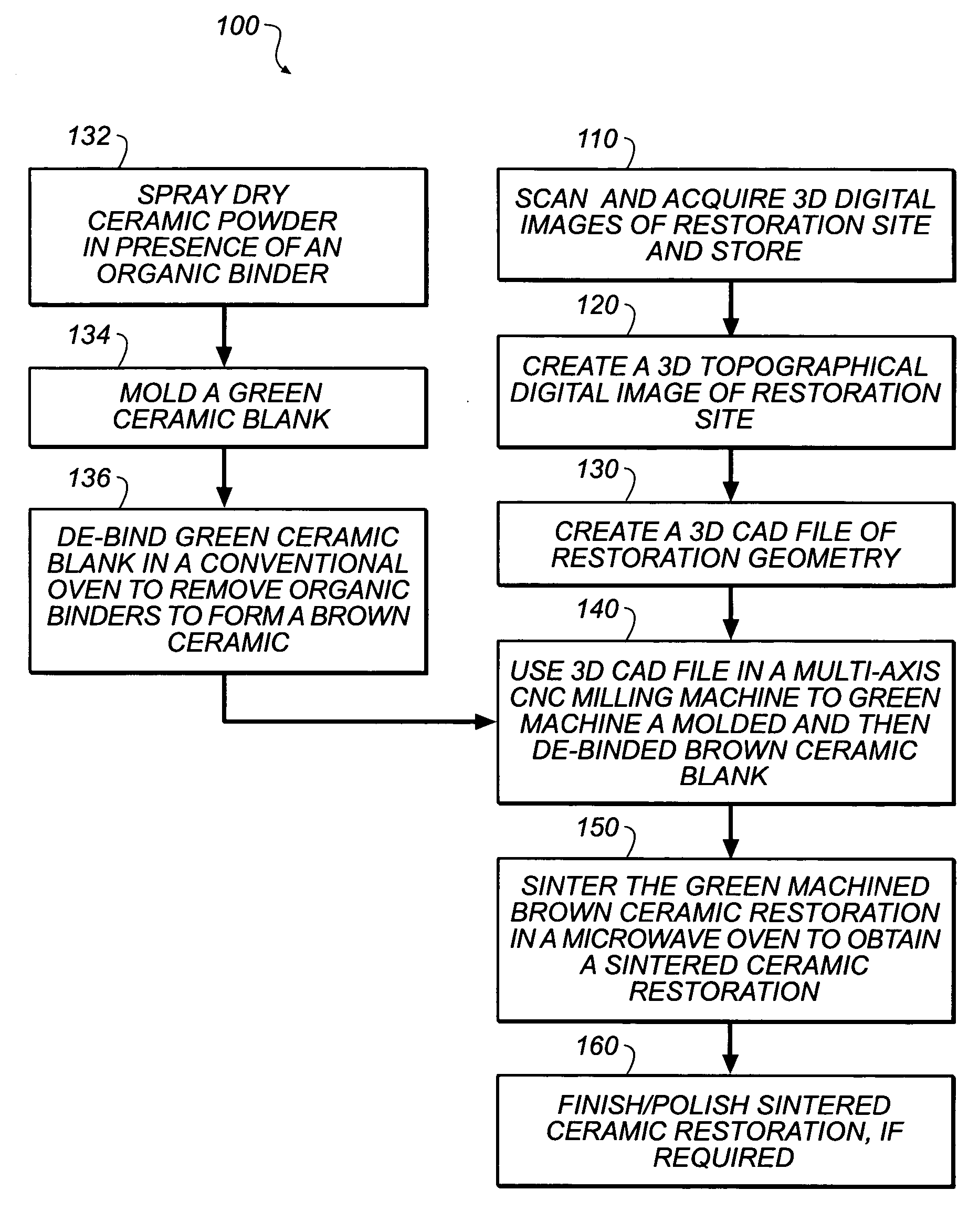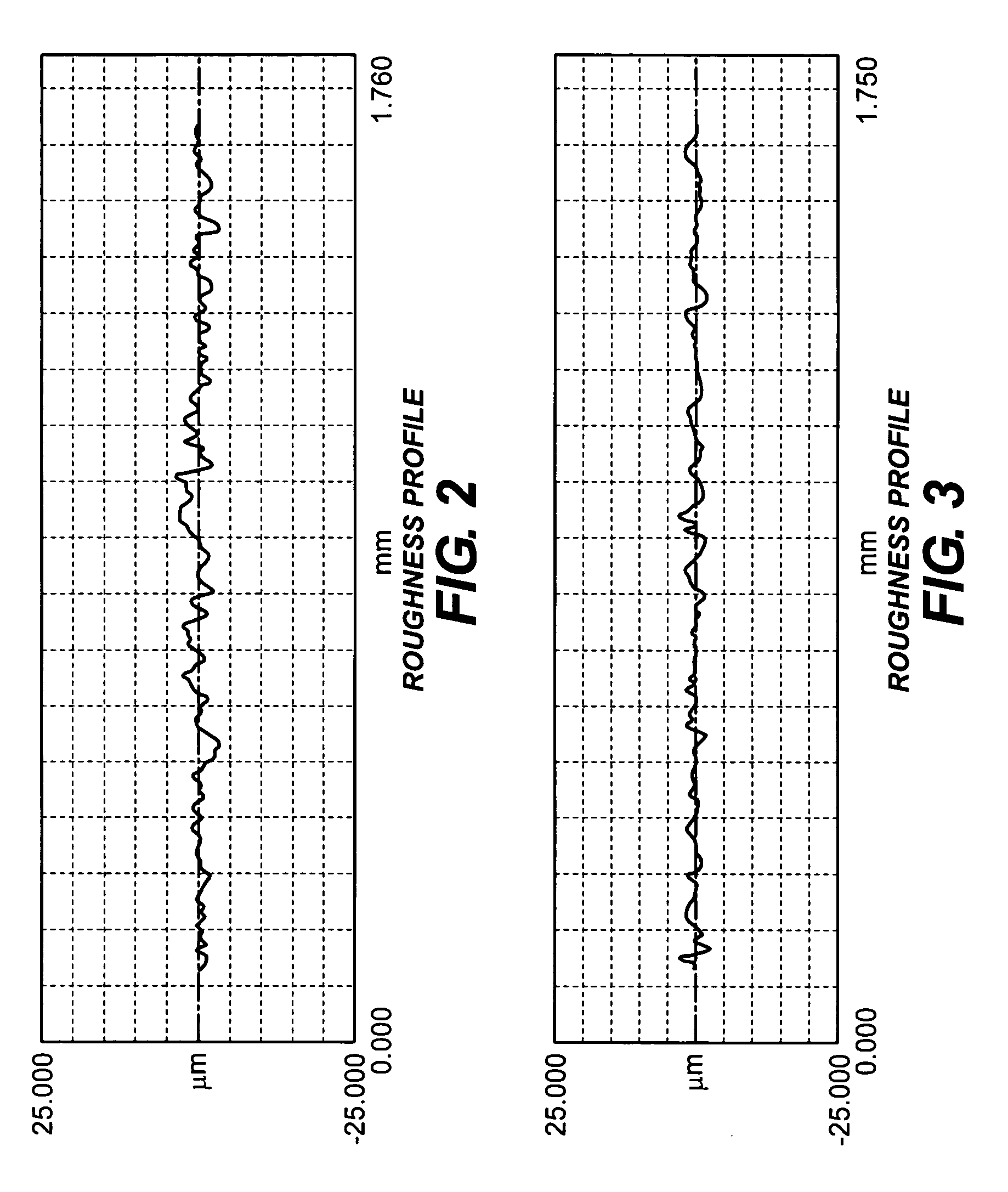Method of making ceramic dental restorations
a ceramic and dental restoration technology, applied in dental surgery, instruments, teeth capping, etc., can solve the problems of reducing the ease of machining, affecting the aesthetics of porcelain restorations, and severely limited dentist's ability to produce porcelain restorations with aesthetics comparable to natural teeth, so as to simplify the microwave sintering process and speed up the speed. , the effect of reducing the difficulty of machining
- Summary
- Abstract
- Description
- Claims
- Application Information
AI Technical Summary
Benefits of technology
Problems solved by technology
Method used
Image
Examples
examples 1-3
[0057] A zirconia alloy having 3 mole % Y2O3 was obtained from Zirconia Sales of America (Marietta, Ga.). The alloy powder had an agglomerate size range of from 30 to 60 μm, a grain size range of from 0.1 to 0.6 μm, and an average grain size of 0.3 μm. Polyvinyl alcohol (4% by volume) was added to the zirconia ceramic powder as a binder by spray drying. The powder was compacted by dry pressing in a mold at a compacting pressure ranging from 10,000 to 30,000 psi (about 70-210 MPa), and an average compacting pressure of 15,000 psi (about 105 MPa) for at least 10 seconds and with a fill ratio of about 3:1, to compact the powder into “green” ceramic blanks. The PVA organic binder was burned off (volatilized) in an air furnace by sequentially heating from room temperature to 300° C. at a rate of 0.3° C. / min., from 300° C. to 400° C. at a rate of 0.1° C. / min and maintaining the temperature at 600° C. for at least 120 minutes, and then cooled to room temperature at a rate of 1.6° C. / min. I...
PUM
| Property | Measurement | Unit |
|---|---|---|
| temperature | aaaaa | aaaaa |
| frequency | aaaaa | aaaaa |
| frequency | aaaaa | aaaaa |
Abstract
Description
Claims
Application Information
 Login to View More
Login to View More - R&D
- Intellectual Property
- Life Sciences
- Materials
- Tech Scout
- Unparalleled Data Quality
- Higher Quality Content
- 60% Fewer Hallucinations
Browse by: Latest US Patents, China's latest patents, Technical Efficacy Thesaurus, Application Domain, Technology Topic, Popular Technical Reports.
© 2025 PatSnap. All rights reserved.Legal|Privacy policy|Modern Slavery Act Transparency Statement|Sitemap|About US| Contact US: help@patsnap.com



